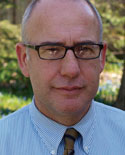- Home
- About Us
- The Team / Contact Us
- Books and Resources
- Privacy Policy
- Nonprofit Employer of Choice Award

 A survey confirmed the disconnect I had been witnessing in planned giving programs across the country. Despite the evidence of opportunity, desire and verbal commitment, charities are failing to grow and progress their planned giving programs. But what to do about it?
A survey confirmed the disconnect I had been witnessing in planned giving programs across the country. Despite the evidence of opportunity, desire and verbal commitment, charities are failing to grow and progress their planned giving programs. But what to do about it?
Ultimately, it is up to us, as professionals in the field, to change this trend. We need to take steps to present planned giving, and its benefits, in a way that is more than simply expectancies and engagement. It is even more than the measures of activities—events operated, the number of meetings with donors, or the direct response activities undertaken. These are all very important, but simply a part of the profound nature of what planned giving can mean to the organization.
Every charity can do more and achieve more, even with (what can only be described as) the woeful levels of program investment that are happening in most charities. Given the enormous opportunity, we have to continue to do what we have always done—work smarter with less resources. Luckily, it is in our DNA as fundraisers.
Proactive programs
Let’s step back for a minute and review what a proactive planned giving program entails. It has basic elements and structure that is common to all charities, whether you are a multi-layered corporate charity or a smaller not-for-profit; whether you are a long-standing organization with history, or one that has recently begun operation; whether you have full-time employees focused on planned giving or you are doing this off the side of your desk.
Finally, and most importantly, your planned giving program must have a thoughtful and future-focused case for support for planned gifts.
Not “legacy” gifts by the way—this term often feels like gifts in your estate only and from what I have been told by my Francophone colleagues is not readily translatable into French. No, I mean planned gifts. This includes estate gifts of one kind or another, but it also means inter vivos gifts—gifts in life. These are endowment gifts and other assets transferred to the charity to fund long-term needs of the organization. We don’t hear much about them anymore but they were an ongoing conversation when I first became involved in planned giving in the 90s. Endowments are essentially the foundation of donor advised funds that have been creeping up in popularity since the banks have become enabled by the CRA to provide tax receipts to their investment clients. Charities have not been focused on these gifts until the recent growing trend in “blended gifts.”
A game changer
A renewed focus on current gifts could be the game changer for charities. When we prepare ourselves to “be at the table” with our donors when they are thinking about their asset base and are considering asset distribution to create a philanthropic gift to charity AND offset taxes, we can see the enormous potential in our database take on a new reality. We can also gain the attention of our organization’s leadership. Charities need to be there as part of the discussion. We cannot assume that our donor’s other professional advisors are having this discussion for us. Our allied professional colleagues may talk about charitable gifts but they likely will not mention your organization specifically. That is the charity’s job.
Charities need to own this revenue stream. They have the advantage. Their mission is, in their own way, to directly make the world a better place by advancing their mission. We know that donors want to donate to important causes—both in their estate and in life. As Dr. Pearce would put it, establishing a fully proactive program is the first step to “making it happen.”
PGgrowth is conducting research on Canadian planned giving programs. Have a few moments to participate? Take our survey.
Ed Sluga, CFRE is one of Canada’s most experienced planned giving professionals and is also co-founder of PGgrowth. Ed is a noted speaker, the co-author with Peter Barrow of Worthy and Prepared, host of the PGgrowth Planned Giving Podcast, Professor of Major Giving and Planned Giving with the Humber College Fundraising Management Program and a regular presenter of the AFP Fundraising Fundamentals Course. He can be reached at ed@pggrowth.com